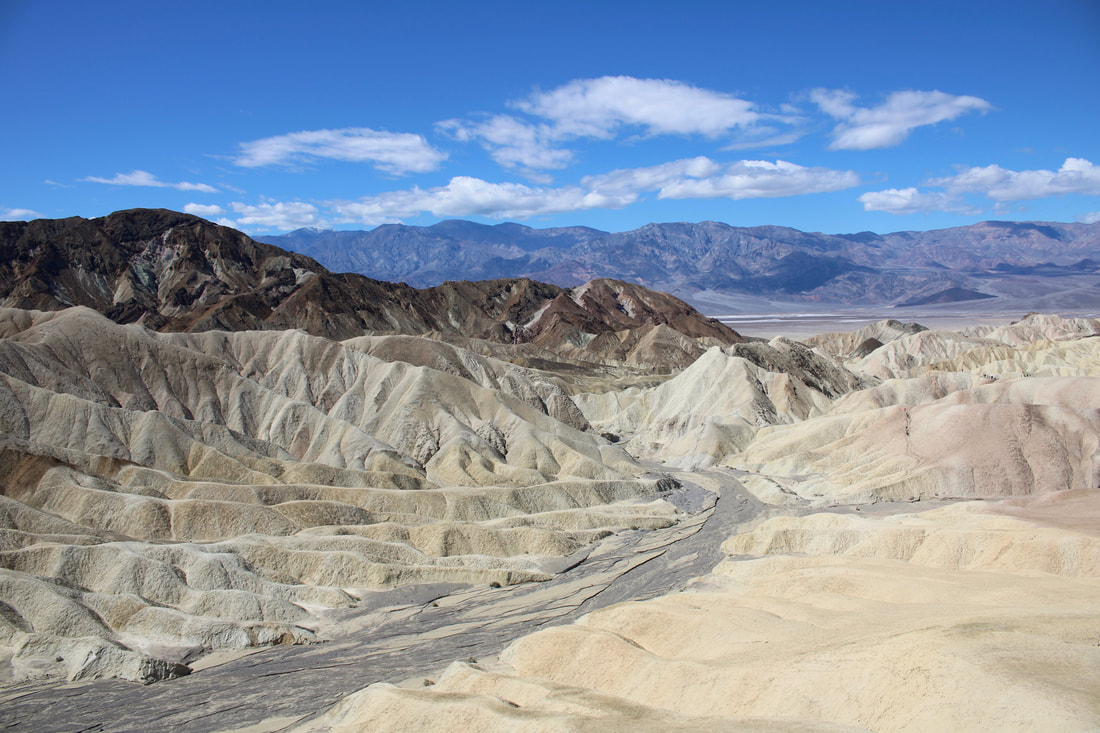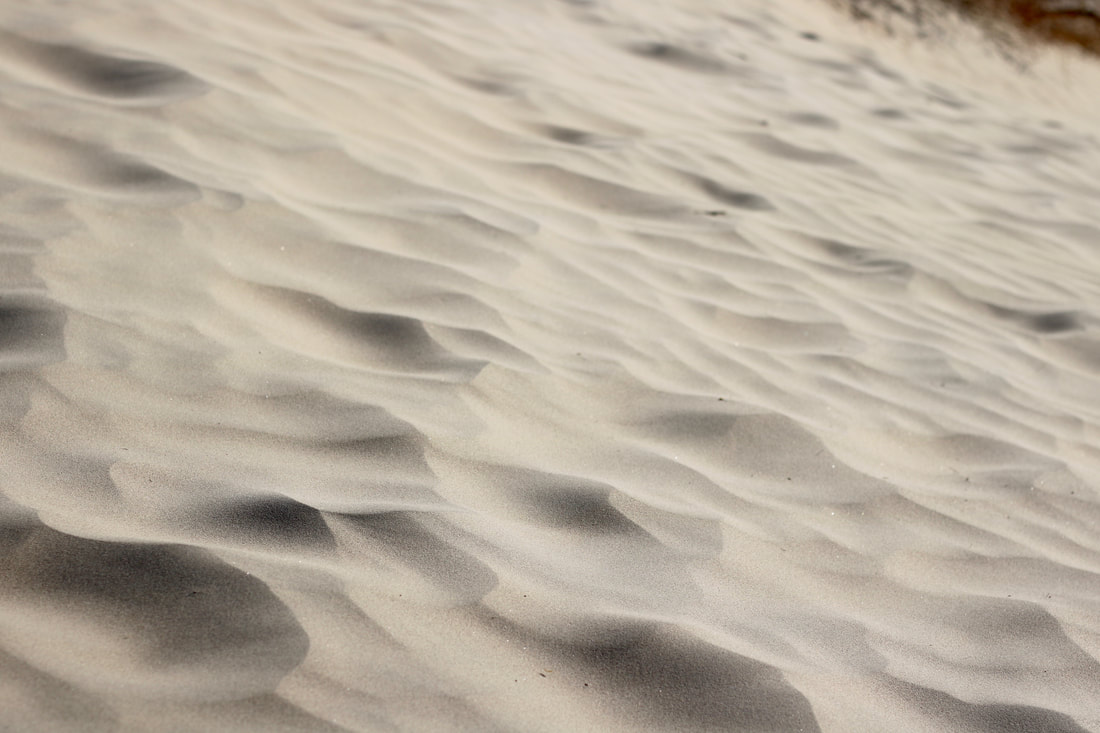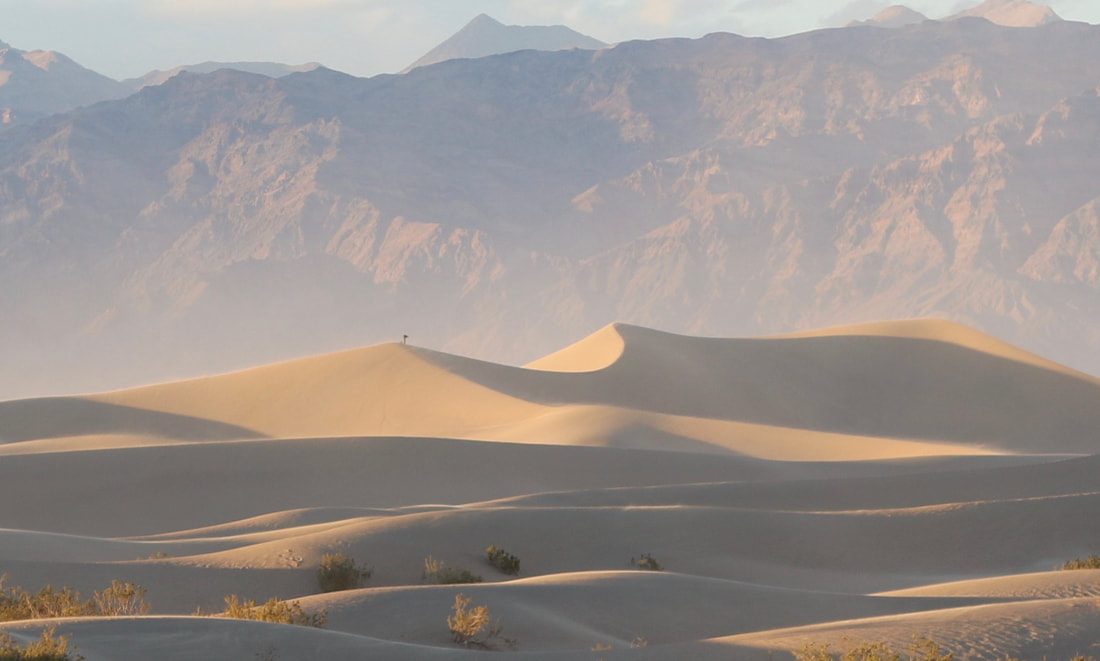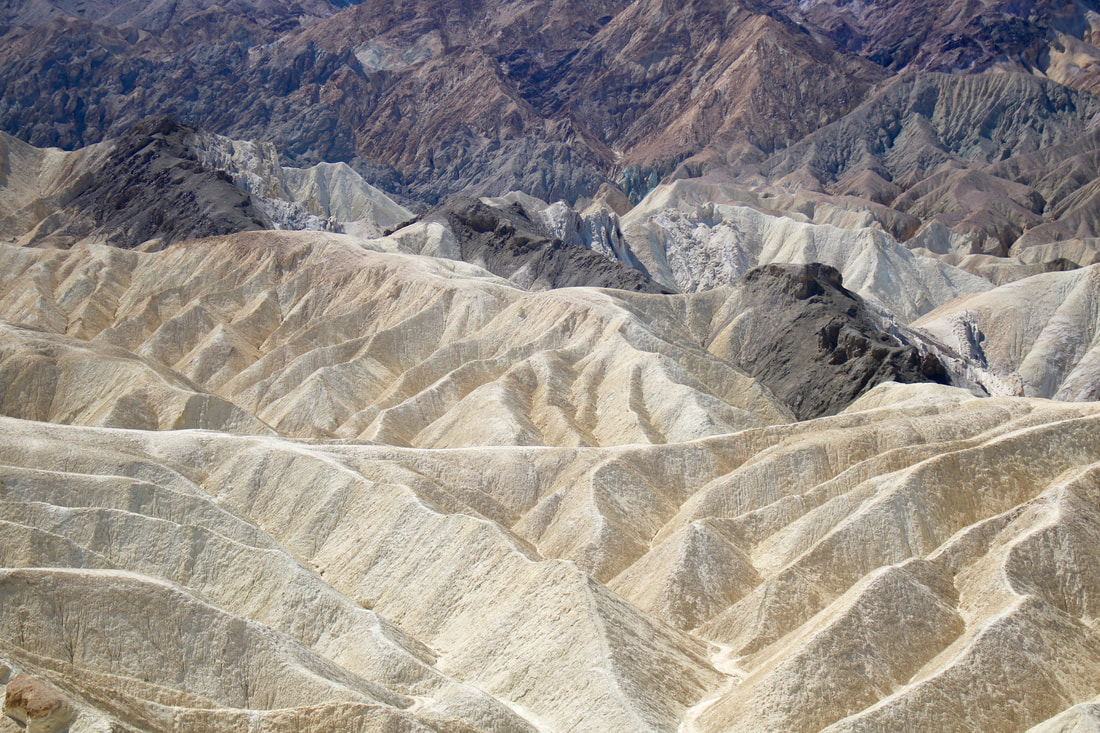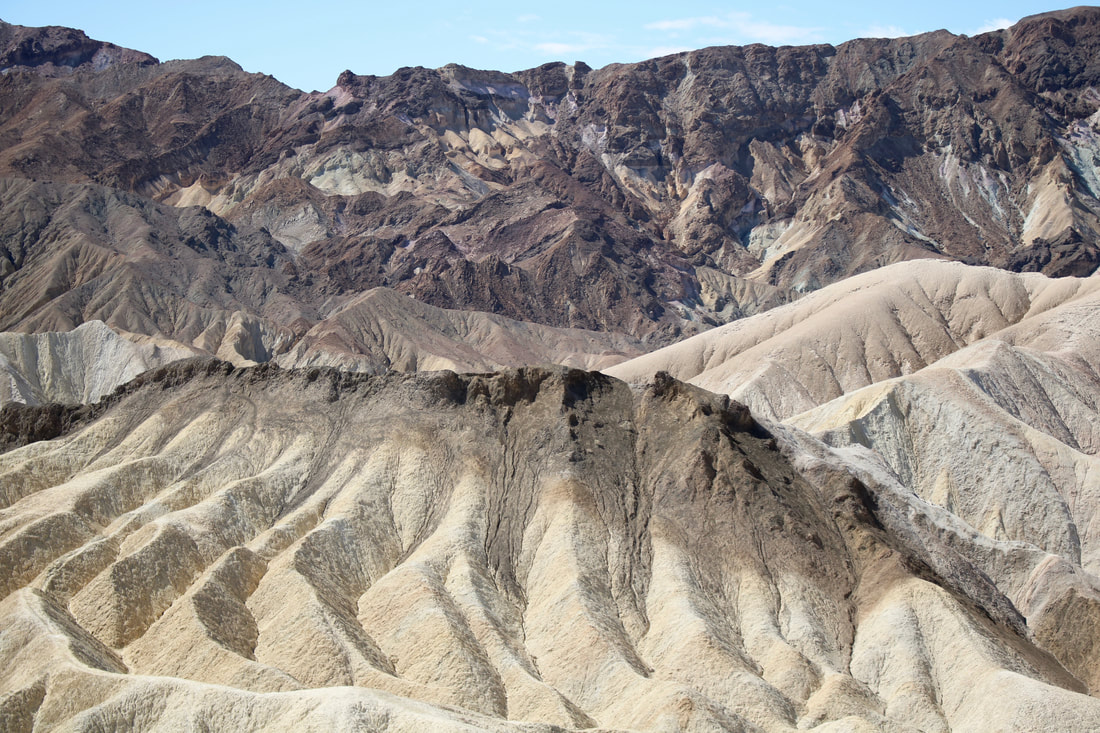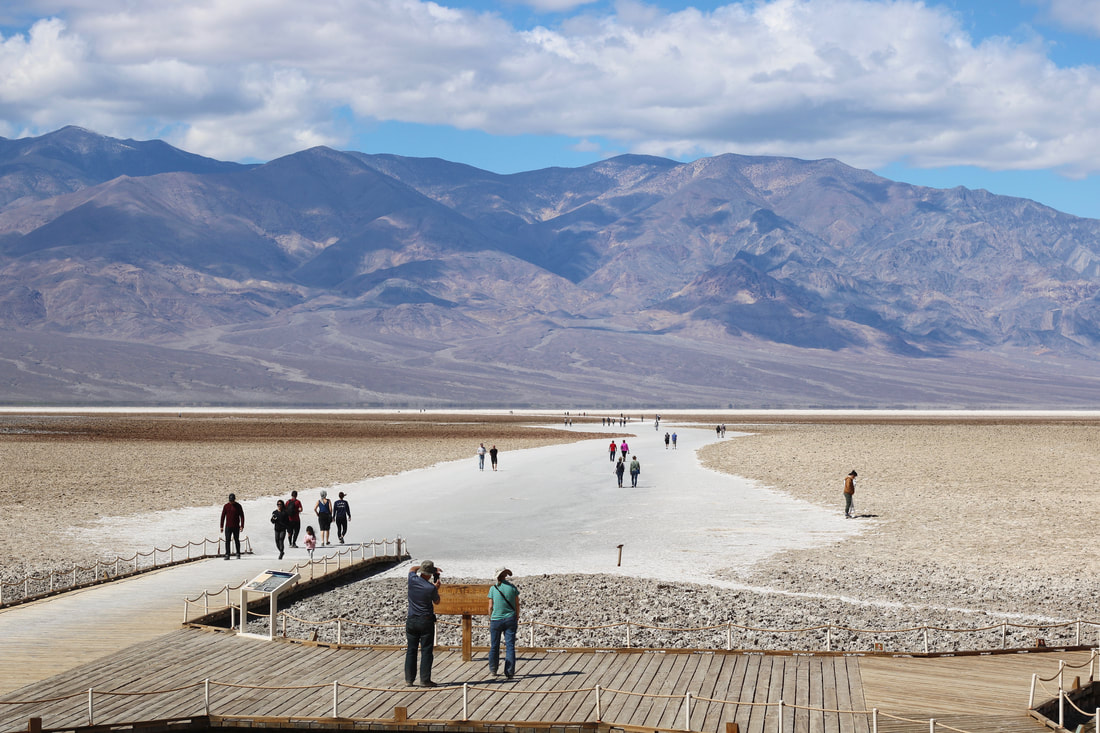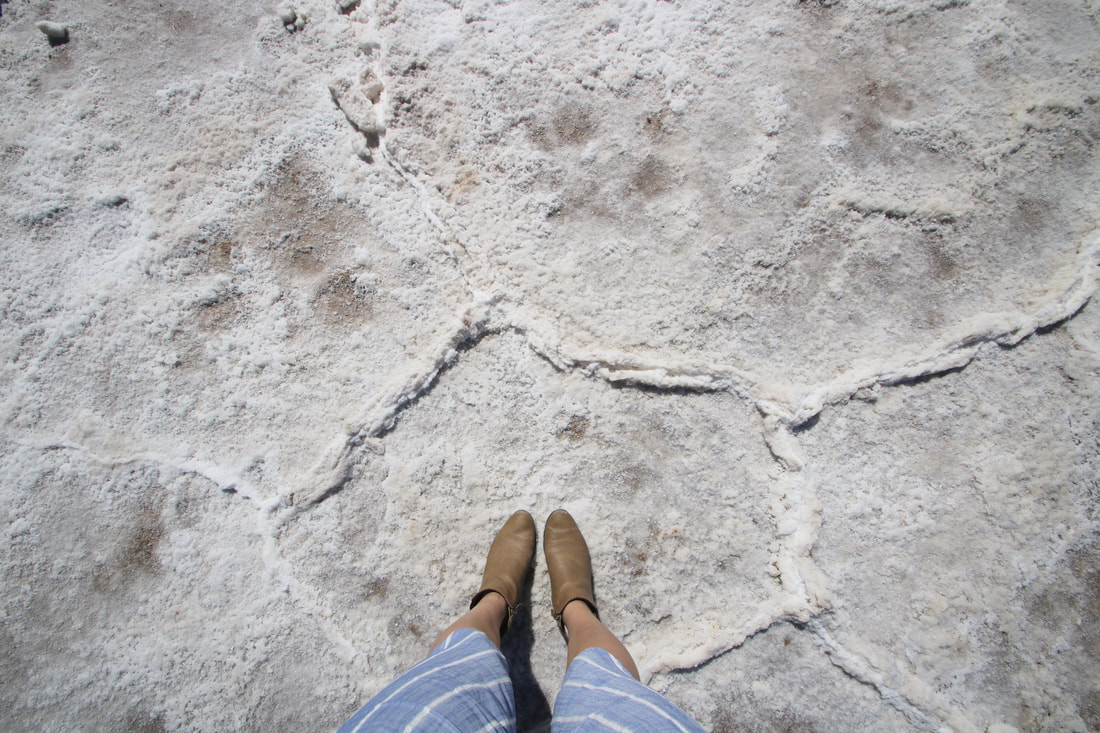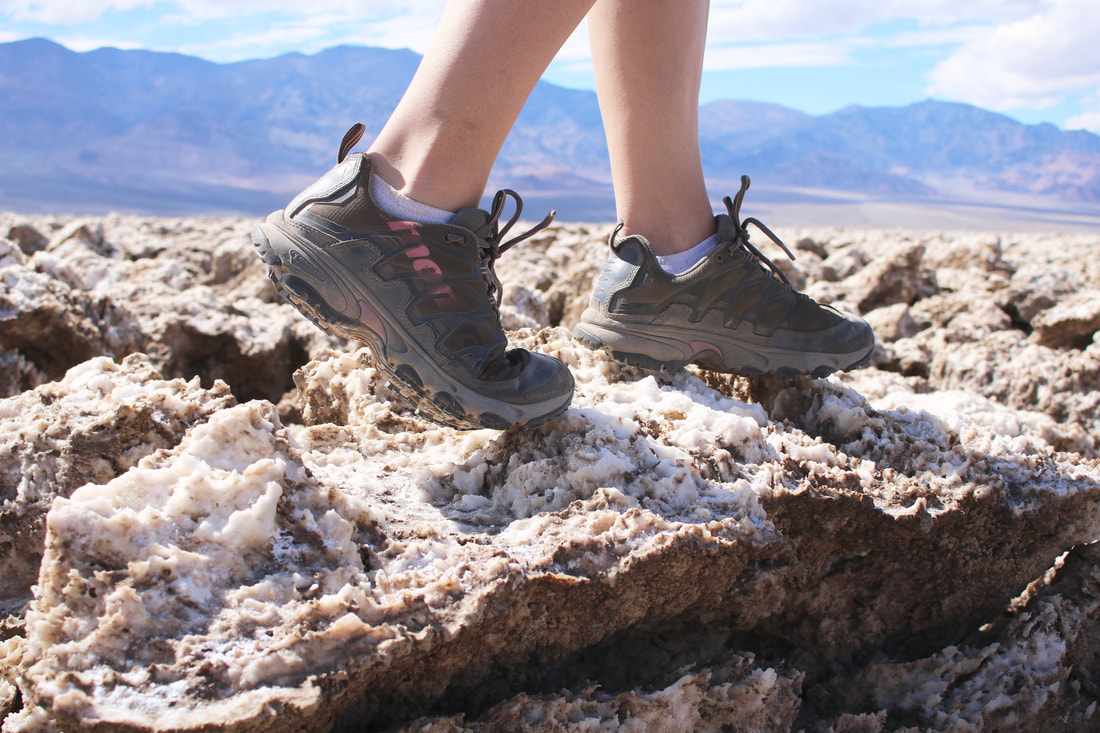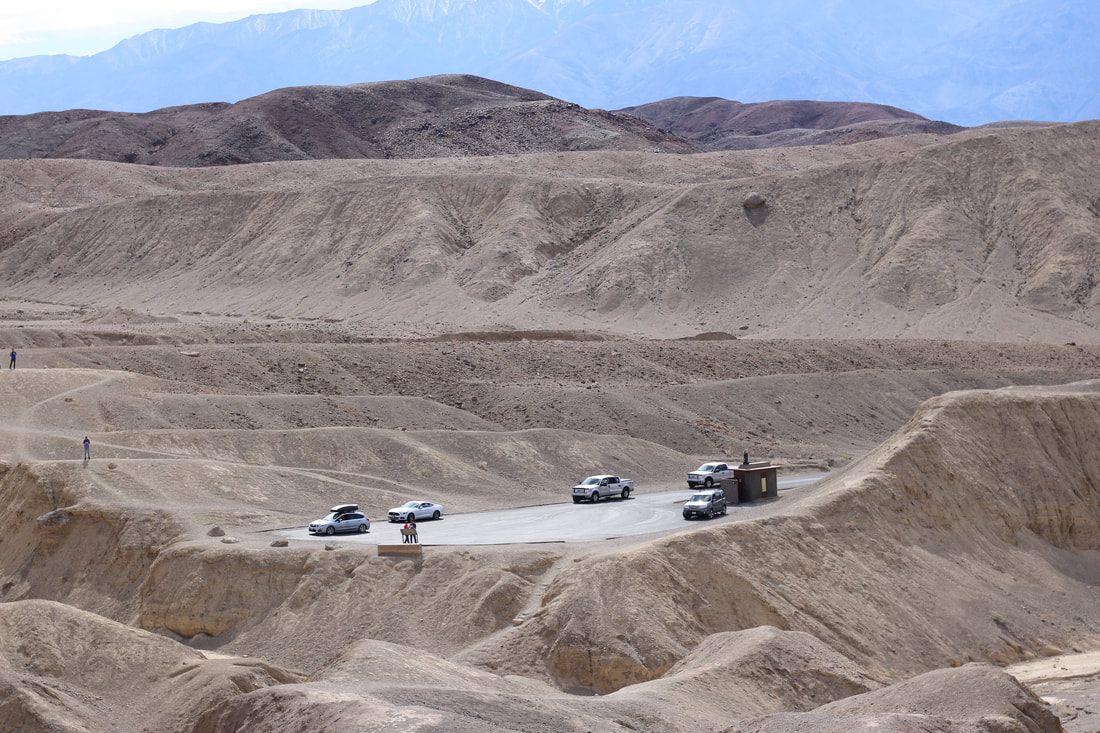|
Hey y’all, I am so excited to share that last weekend I visited a California National Park that has been on my bucket list for the past few years - Death Valley! Growing up in So Cal, Death Valley always seemed like a somewhat eerie place that you wouldn’t necessarily plan to visit for leisure - probably both due to its daunting name and the fact that in the summertime, it’s known as the hottest place in North America. In fact, on July 10, 1913, a record 134 degree F was measured by a weather observation station at Furnace Creek Ranch in Death Valley. Wowza. Luckily, my partner and I visited right at the end of winter/official beginning of spring, and the weather during this time of the year couldn’t have been more perfect. We were met with temps ranging from the low 60’s in the morning/evening, to the high 70’s during the afternoon. The weather when we visited was absolutely lovely, but I’m not quite sure I could brave this Nat’l Park in the hot summer heat. In case you were wondering about how Death Valley got its name, like I was before visiting, here’s some info from NPS.gov: “Death Valley was given its forbidding name by a group of pioneers lost here in the winter of 1849-1850. Even though, as far as we know, only one of the group died here, they all assumed that this valley would be their grave. They were rescued by two of their young men, William Lewis Manly and John Rogers, who had learned to be scouts. As the party climbed out of the valley over the Panamint Mountains, one of the men turned, looked back, and said "goodbye, Death Valley." This name, and the story of The Lost '49ers have become part of our western history.” In addition to the history behind its name, I was also surprised to learn that Death Valley is home to the lowest point in our continent (at 282 feet below sea level), and is the United States’ largest national park, at over 3.4 million acres/5,300 square miles. Basically, it’s H-U-G-E. Not only is it the largest, but after visiting, I’m convinced it’s one of the most unique and beautiful as well. Throughout the duration of this blog post, I’ll include information on tips for visiting, where to stay, and some of the top sights to see in the park. I hope you will consider visiting this incredible gem right in LA’s own backyard (well, roughly a 4 hour drive -- but totally worth it!). How much does it cost to visit Death Valley? The entrance fee for Death Valley is $25 for 7 days, and you can pay for the fee at any visitor center in the park. The main service center in the park is centrally located in Furnace Creek, with the official visitor center (open daily, 8 am to 5 pm), as well as campgrounds, restaurants, a convenience store, and a gas station. Where should you stay? My partner and I had planned to spend 2 days total in the park, which was just the right amount of time for us. When researching where to stay in the park, I was kind of stumped. The hotels were all out of our budget (some were up to $400/night), and I’m not a fan of tent camping (full disclosure: after staying in an RV during our trip to Yellowstone, I now can’t camp any other way…#noshame #glampingonly). After spending time online looking at all potential lodging options, I came across Pahrump, NV, a small town about an hour outside of the park, where other Death Valley tourists & vacationers frequently stay and easily drive into the park each day. We ended up booking an AirBnb here for just under $100/night, and it was so worth it! Our AirBnB was one of our favorites that we have stayed in so far - from the overall comfortability and having more space than a traditional hotel room, to the overall ease and convenience of its location, to the desert-inspired decor (the gas fireplace was my favorite part of the casita). I’ve included the link to where we stayed below, as well as other lodging options for you to browse to make your own decision on where to stay that best fits your needs. -Our AirBnb in Pahrump - about an hour or so drive into Death Valley each day that you visit (would highly recommend! Pictures included below) https://www.airbnb.com/rooms/13079307 -Death Valley hotels: https://www.nps.gov/deva/planyourvisit/lodging.htm -Death Valley camping: https://www.nps.gov/deva/planyourvisit/camping.htm The Mesquite Flat Sand Dunes are one of the most visited locations in Death Valley Nat’l Park, and one of the spots that I was most excited to visit. Located roughly 30 minutes outside of Furnace Creek, this is the largest area of sand dunes in the park. There is a large, easily accessible parking lot directly next to the dunes, and a short walk out onto the sand will allow you to explore this area at your leisure. While you could easily spend hours here exploring, I’d highly recommend checking the weather before visiting and avoid coming here if wind is at all in the forecast. We happened to visit on a VERY windy day, and let’s just say I needed to watch my face multiple times to get all of the sand and grime off of my face and body afterward (ick). Even with the uncomfortable winds, the dunes were still awesome to explore and photograph. We were here for about an hour or so in the late afternoon, took a break for a drink nearby at the Stovepipe Wells Saloon (pro tip: try the buffalo bourbon), and then came back for another hour or so around sunset. I’d highly recommend spending sunset here (and bringing a blanket or chairs to soak up the desert scenery). As the sun slowly descended upon the horizon, the sand dunes shimmered and the sunset-colored clouds made for an incredible backdrop. It was simply picturesque. Another heavily visited location in the park is Zabriskie Point. At Zabriskie Point you’ll find incredible canyon and colorful mountain-side views, also known as Death Valley’s “bandlands.” Zabriskie Point is just a short drive from Furnace Creek, and a short walk up a paved hill is all that it takes to soak up these impressive, 360 degree views. Is that snow covering the ground in these pictures? Nope - it’s a whole lot of salt! Here, my friends, is the lowest elevation in North America, at a staggering 282 feet below sea level. Badwater Basin is home to miles and miles (200 square miles, to be exact) of salt flats, and they are one of the largest protected salt flats in the entire world. Salt flats are very fragile, so no cars are allowed on the flats - folks are only allowed to walk (and hopefully, do so in a gentle manner) onto the flats. A fun fact is that Badwater Basin got its name from a traveler coming through, many years ago, and saw that there was water here for his mule to drink. But, because the water was so salty, the animal refused to drink it and it was considered “bad water.” Badwater Basin is roughly a 30 minute drive from the Furnace Creek area, and there’s a large, easily accessible parking lot for visitors. Natural Bridge is just what the name describes… a natural bridge! This 50-foot-tall bridge has been created naturally from “differential erosion” over the course of thousands of years. The parking area for the Natural Bridge is located 1.5 miles along a dirt road directly off the main road (and get ready for a pretty bumpy ride on this completely unpaved road!). Once you reach the parking area, you will hike only about 0.5 miles until you reach the Natural Bridge. You can continue on for about another 0.5 miles until the trail ends, if you choose, and will see more tall, colorful canyon walls. Enjoy, and remember to bring water and sunscreen (as shade is very limited) on your trek. Welcome to the Devil's Golf Course! Rock salts in Death Valley have been eroded by wind and rain over the years into a large stretch of jagged, salt-covered rocks. In the hot summer temperatures, visitors will apparently hear pops coming from the rocks, which grow louder and louder the closer you get to the ground. These sounds are billions of tiny salt crystals bursting apart as they expand and contract in the super high temperatures. How’s that for fascinating? From the main road (located in between Natural Bridge and Artist's Drive), a short paved road will take you to the parking area. Once you park, you can walk onto the field at your leisure. Make sure you wear sturdy, closed-toed shoes, and be careful about where you walk here - a fall on this jagged terrain can’t feel good! Artist’s Drive is a one-way, 9-mile road that takes about 30 minutes-1 hour total to drive through. The main stop on Artist’s Drive is Artist’s Palette, a section of pastel-colored hillsides. Colors found here range from orange, pink, green, red, and turquoise, which are created naturally from metals and elements in the clay. Artist’s Palette couldn’t really be a more perfect name for it, and honestly, have you ever seen mountains so pretty? About 10 minutes or so into Artist’s Drive, you’ll pull over to the parking lot on your right hand side of the road as soon as you see the sign for Artist’s Palette (you can’t miss it). Once you park, you’ll be able to get out and explore these colorful views at your leisure. From sprawling canyons and mountain-sides of the most gorgeous and rich colors, to sand dunes for as far as the eye can see, to miles and miles of salt crystals and salt flats - I’ve truly never experienced a place as vast, and a terrain as unique, as Death Valley National Park. Death Valley is home to some of the most dramatic and incredible scenery, and it felt like there was something interesting to see at each and every turn. It’s an easy 4 hour drive from Los Angeles, it’s relatively low-cost to visit compared to other national parks in our country, and it’s accessible for all levels of activity (as in, there are many more things to do/see here than long hikes or other more intense adventures). For these reasons, I’d recommend all So Cal-ers to consider planning a trip to the United States’ largest national park for your next #GetawayFromLA adventure.
Happy adventuring in LA and beyond, folks! As always, feel free to comment if you have any questions, and I’ll respond to you as soon as I can.
0 Comments
Leave a Reply. |
WANDER BEYOND THE CITY LINES...As much as I love to explore L.A., it's good for the soul to getaway every now & then. Join me as I escape from the city to explore new locations, both locally and globally! LET'S GET AWAY TO:
All
|
- Home
- Start Here: Exploring Los Angeles
-
Getaway from L.A. Trips
- Banff, Canada
- Big Sur, California
- Cancun, Mexico
- Cabo San Lucas, Mexico
- Death Valley National Park
- Great Barrier Reef, Australia
- Hearst Castle
- Joshua Tree National Park, CA
- Maui, Hawaii
- New Orleans, LA
- Peru & Machu Picchu
- Portland, Oregon
- Queenstown, New Zealand
- Sacramento, CA
- San Luis Obispo, CA
- Sydney, Australia
- Temecula, CA
- Valle De Guadalupe, Mexico
- Yellowstone National Park, Wyoming
- Yosemite National Park, CA
- More
|
Follow my blog's page on Instagram for updates!
|
COPYRIGHT © 2016 Detour L.A. ALL RIGHTS RESERVED. Unauthorized use and/or duplication of the images on all pages of this website without express and written permission from this site’s author and/or owner is strictly prohibited. Excerpts and links may be used, provided that full and clear credit is given to www.DetourLA.com. Contact for details: [email protected].
- Home
- Start Here: Exploring Los Angeles
-
Getaway from L.A. Trips
- Banff, Canada
- Big Sur, California
- Cancun, Mexico
- Cabo San Lucas, Mexico
- Death Valley National Park
- Great Barrier Reef, Australia
- Hearst Castle
- Joshua Tree National Park, CA
- Maui, Hawaii
- New Orleans, LA
- Peru & Machu Picchu
- Portland, Oregon
- Queenstown, New Zealand
- Sacramento, CA
- San Luis Obispo, CA
- Sydney, Australia
- Temecula, CA
- Valle De Guadalupe, Mexico
- Yellowstone National Park, Wyoming
- Yosemite National Park, CA
- More


